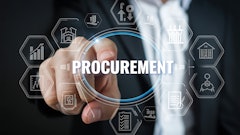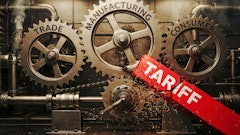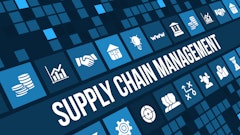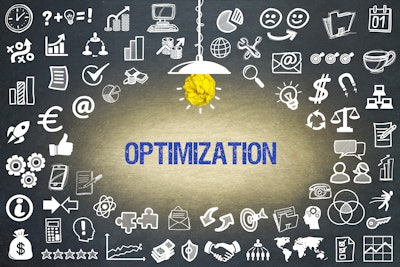
Between CPG companies and the multiple retail channels they sell through, there is a swirling mass of data. This data streams in from hundreds of systems, many of which are disparate from each other and often dump raw data into a massive data lake. What should be the foundational knowledge to drive better decision-making for both sides is so complex that it leads to best-guess decisions or delayed actions that offer only partial benefits to the business.
While it's true that connectivity and collaboration among retailers and CPG brands have greatly evolved, there is still a significant barrier to seamless data sharing and usable analysis. This digital blockade is holding companies back from optimizing manufacturing, distribution, inventory, merchandising, sales and even marketing. But if we break it down, it can open up the ability to gain accurate end-to-end supply chain visibility, reduce cost and waste across the supply chain, and create stronger brands in the eyes of consumers.
The challenge is that moving forward isn’t a one-step process. We have to tackle modernization and transformation in stages. Let’s look at the four critical areas that can bring suppliers and retailers closer together to create more efficient, agile and ultimately more profitable businesses.
Unblock Efficiency with Connectivity
Stage one of any digital transformation effort is to look within your organization, audit your data systems, and remove internal silos. Many organizations have completed this step and are moving on to more significant supply chain connectivity efforts. The next step is to connect externally, enabling joint business planning between retailers and suppliers through more accurate forecasting, real-time shipping and logistics, inventory management and more. It shifts the relationship from transactional to strategic because it leverages data in real-time and helps suppliers anticipate retail needs rather than wait to be given the data needed to make everyday supply chain decisions.
A crucial part of this strategy involves data analytics—developing a plan for how organizations want to use data, understanding what they are trying to measure and accomplish and identifying the data needed to fill those gaps. This approach ensures that the data collected is relevant and actionable, driving more informed decision-making across the supply chain.
By democratizing access to business data, for example, a supplier of ice cream no longer needs their retailer to tell them that sales are up in eight locations in the Southwest region because the supplier can see the data as it happens. This efficiency enables the supplier to make decisions quickly—do we need to ramp up manufacturing and modify distribution, or is this a short-term buying trend?
Give Data a Common Framework
Once an organization understands what data is needed and how they will get it, it must make it usable across the organization and establish a single source of truth. A critical tool to ensure all departments - from BI analysts to supply chain and sales and marketing - in the organization are on the same page is a semantic layer, which translates complex data into understandable business logic. It works best when applied within a tech stack with a data ingestion and normalization layer that reconciles inconsistencies. For example, a category such as ‘Units Sold’ should always be defined and measured the same way, regardless of whether the source data came from Target or Amazon.
This approach is beneficial for marketing, inventory managers, buyers, etc., who want to access real-time data insights in a way that works specifically for their function. This extensibility fosters deep data exploration and the ability to instantly define top-line metrics that can be computed with other values. Marketing might ask: “In the last year, how did regions with high-humidity periods affect sales of fruit-flavored beverages compared to regions with less humidity?” to better inform a regional forecast. Without data ingestion, normalization, and a semantic layer, this query would only be possible by downloading, combining and analyzing data in pieces, which is a heavy and time-intensive lift. But now, this same insight can be available in seconds.
Elevate Important Metrics with AI Insights
With the data strategy and framework built, organizations can unlock the power of data to deliver insights into the business with cutting-edge analytics. Sitting on top of the semantic layer automatically updated with real-time data allows teams to understand KPIs and changes to their business faster than ever before. BI teams and analysts have more time to dig into root causes and trends instead of cleaning data and pulling reports. On top of conventional analysis, the ability to layer in deeper intelligence in the form of AI is emerging. Leveraging AI to look for and flag certain activities constantly, means business teams can spend more time focusing on the metrics that matter. For example, knowing that certain stores have excess inventory at expiration risk can trigger a localized marketing campaign to move products and reduce waste. Managing the business effectively requires real-time insights into multiple, very granular data factors.
Drive Revenue with Synergistic Relationships
When CPG brands and retailers partner effectively, it changes the relationship from one based on the transactional movement of products to fulfill demand to a synergistic relationship where each entity along the supply chain is acting in harmony. Both internal forces such as manufacturing and logistics and external forces such as weather patterns or evolving buyer behavior, can be used collectively to tighten every process. This allows for early identification of any changes or bottlenecks, elevates trends and opportunities, and provides a data-driven roadmap of actions customized for individuals and teams based on their roles and responsibilities.
By removing delays in data-sharing, both CPG brands and retailers can optimize on the fly, meet customer expectations, move products and generate sales while reducing waste and inefficiencies. This not only supports brand perception but also reinforces sustainability in practice.
Embracing these stages takes time and also requires buy-in at every level. One of the most challenging aspects of modernization and transformation can be change management. So, it’s essential to surround yourself with advisors and technology partners with deep relationships with similar CPG brands and retailers. These third-party experts can help articulate the benefits, cost savings, ROI and more to key stakeholders, leveraging their existing relationships to streamline the adoption of new tools and platforms. With the right teams in place, bringing CPG brands and retailers closer together has never been more within reach.




![Pros To Know 2026 [color]](https://img.sdcexec.com/mindful/acbm/workspaces/default/uploads/2025/08/prostoknow-2026-color.mduFvhpgMk.png?auto=format%2Ccompress&bg=fff&fill-color=fff&fit=fill&h=100&q=70&w=100)
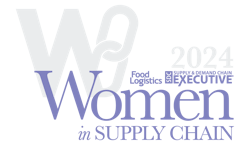
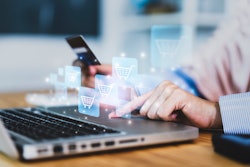

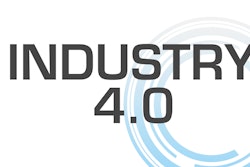



![Pros To Know 2026 [color]](https://img.sdcexec.com/mindful/acbm/workspaces/default/uploads/2025/08/prostoknow-2026-color.mduFvhpgMk.png?ar=16%3A9&auto=format%2Ccompress&bg=fff&fill-color=fff&fit=fill&h=135&q=70&w=240)


